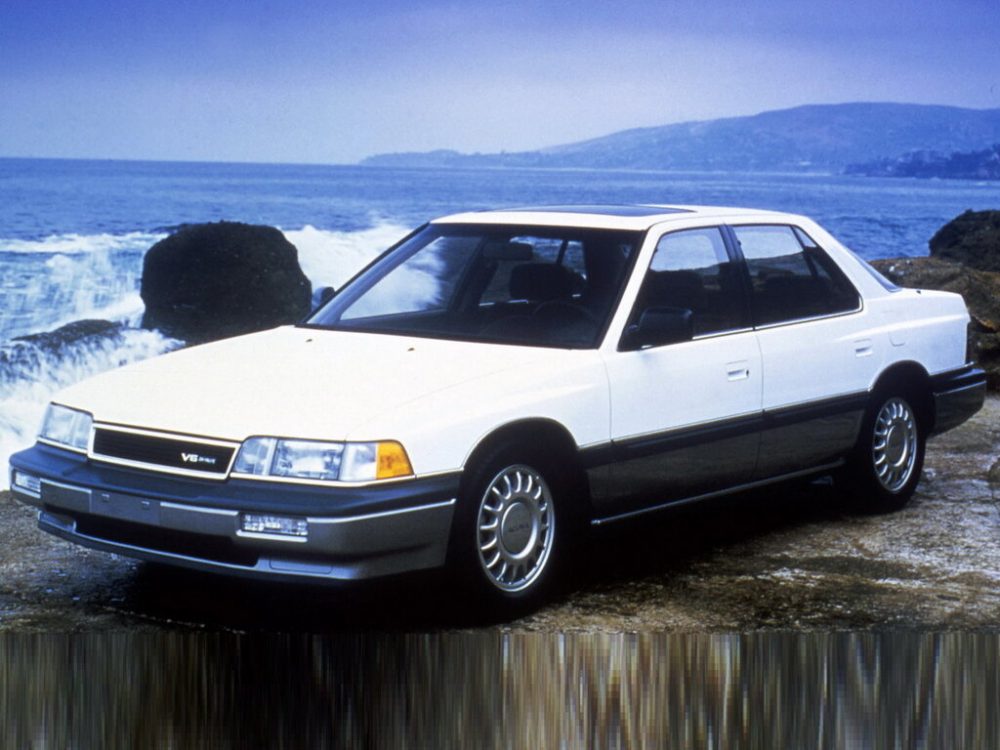Back in 1985, Japanese automakers hadn’t yet cracked the luxury car market in North America. Then Honda dropped a bombshell – the Acura Legend. This wasn’t just another Japanese sedan; it was a calculated move that would reshape the automotive landscape for decades to come.
The Legend earned its name through groundbreaking engineering and meticulous attention to detail. While European luxury brands dominated headlines, this newcomer quietly redefined what buyers could expect from a Japanese luxury car.
Engineering Excellence Under the Hood
The heart of the Legend beats with Japanese precision – a 2.5-liter V6 engine that pumps out 151 horsepower. Unlike typical luxury cars of the era that sacrificed reliability for power, this powerplant delivered both. The engine’s smooth operation and distinctive growl became hallmarks of the driving experience.
Engineers pushed boundaries with their 24-valve SOHC design, proving that luxury performance didn’t require massive displacement. The 1987 upgrade to 2.7 liters brought even more refinement and punch to the package.
“My ’87 Legend hit 200,000 miles without missing a beat. That V6 engine was bulletproof – smooth as silk even after all those years.” – James Mitchell, classic car collector
The transmission options showcased Honda’s commitment to driver preference. Whether paired with the slick-shifting manual or the smooth automatic, power delivery remained consistently impressive. Each gear change felt purposeful, engaging, yet never harsh.
Revolutionary Design Philosophy
The Legend’s exterior broke from conventional Japanese styling cues of the 1980s. Clean lines and perfect proportions created a timeless silhouette that still turns heads today. The designers knew their target market – executives who wanted sophistication without flash.
Here’s what set the Legend’s design apart from competitors:
- aerodynamic profile with class-leading drag coefficient;
- chrome accents used strategically rather than excessively;
- distinctive C-pillar design that enhanced structural rigidity;
- flush-mounted glass for reduced wind noise.
The Legend’s proportions weren’t just about looks – they translated into exceptional interior space and comfort. This perfect balance of form and function became a blueprint for future luxury sedans.
Interior Craftsmanship
The cabin welcomed occupants with materials typically reserved for European luxury cars. Soft leather, genuine wood trim, and tactile switches created an atmosphere of understated excellence.
“Stepping into my Legend felt special every time. The attention to detail was incredible – even the door handles had perfect weight to them.” – Sarah Chen, original owner since 1986
Each control placement reflected countless hours of ergonomic study. The wraparound dashboard design brought every function within easy reach while maintaining an uncluttered appearance. Climate controls operated with satisfying precision, while the premium sound system delivered impressive clarity for its era.
Performance and Handling
The Legend tackled corners with surprising agility for a luxury sedan. Its front-wheel-drive layout, often criticized in premium vehicles, proved an asset in real-world driving conditions. The four-wheel independent suspension struck an ideal balance between comfort and control.
Some standout driving characteristics included:
- responsive steering with excellent feedback;
- stable high-speed cruising behavior;
- predictable handling in adverse conditions;
- exceptional brake feel and stopping power.
The 9.9-second sprint to 60 mph might not impress by today’s standards, but the Legend’s smooth power delivery and refined road manners earned praise from period reviewers.
A Legacy That Lives On
Today, finding a well-maintained first-generation Legend feels like discovering buried treasure. These cars weren’t just transportation – they represented a watershed moment in automotive history. The Legend proved that luxury, performance, and reliability could coexist in a single package.
The impact of this pioneering model extends far beyond its production numbers. It established Acura as a serious player in the luxury market and forced European manufacturers to step up their game in terms of build quality and reliability.
Pros and Cons
| Advantages | Disadvantages |
|---|---|
| Exceptional build quality with proven longevity | Limited availability of certain replacement parts |
| Smooth, reliable V6 engine with strong performance | Front-wheel drive layout may not appeal to luxury purists |
| Sophisticated suspension design with balanced handling | Fuel economy trails some contemporary competitors |
| Premium interior materials that age gracefully | Manual transmission models are increasingly rare |
| Innovative features ahead of its time | Paint susceptibility to UV damage on certain colors |
| Strong rust resistance compared to period rivals | Some electrical components require specialist knowledge |
| Excellent value retention for well-maintained examples | Interior wood trim prone to fading without proper care |
This first-generation Legend stands as testament to Honda’s engineering prowess and vision. While finding a pristine example today requires patience and dedication, the reward is ownership of a pivotal piece of automotive history that still delivers a compelling driving experience.

